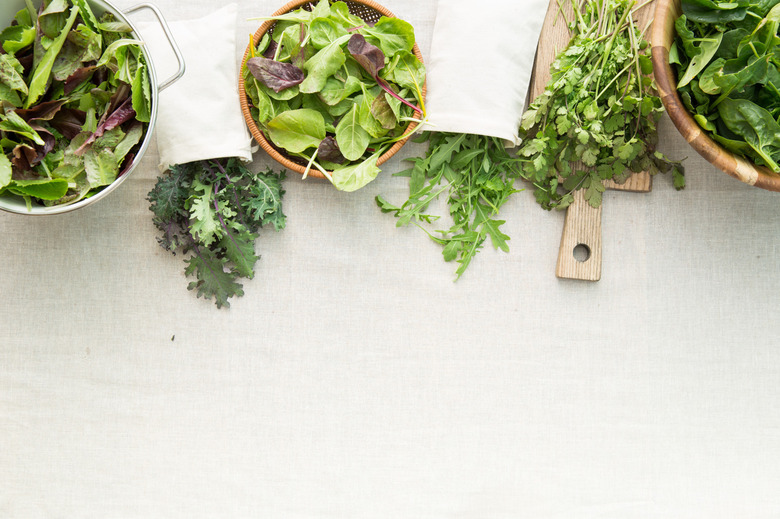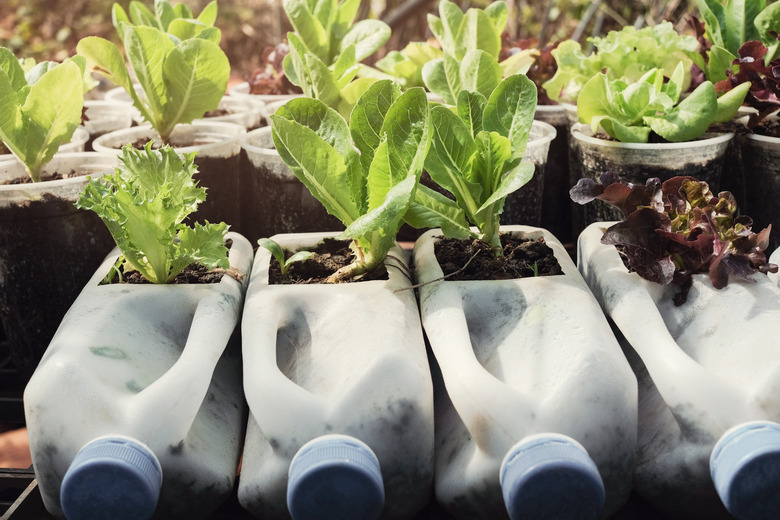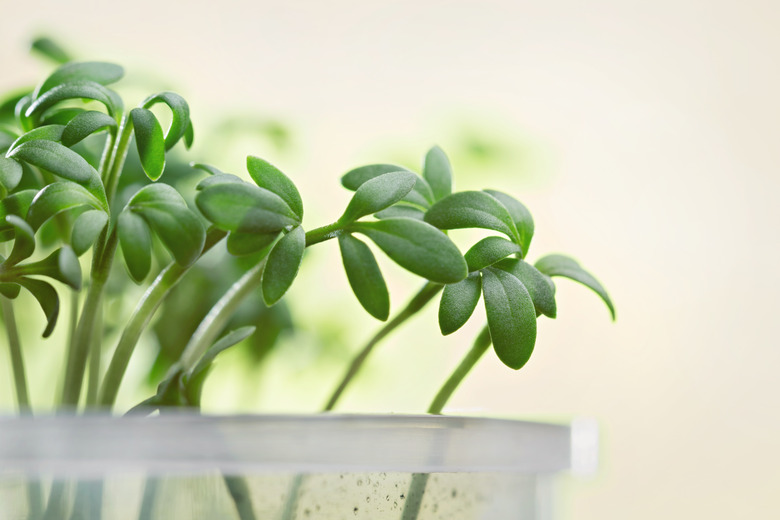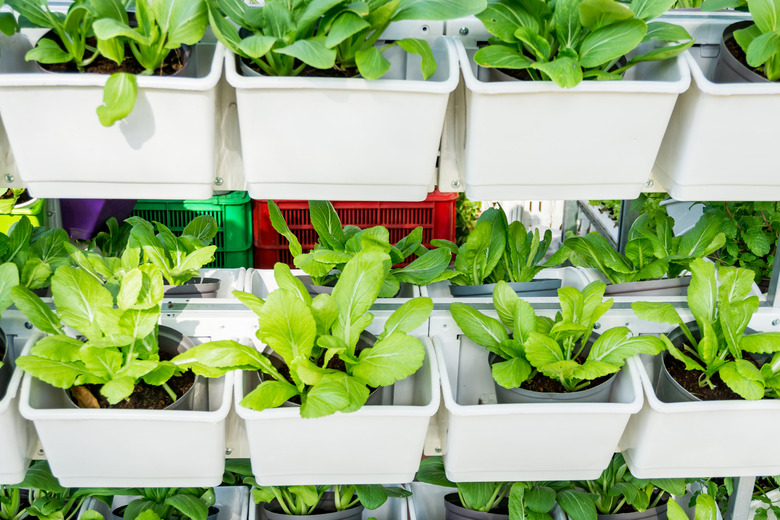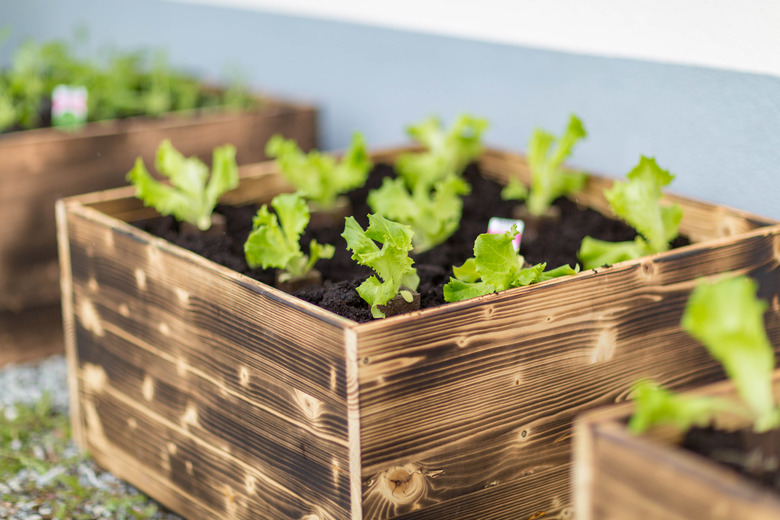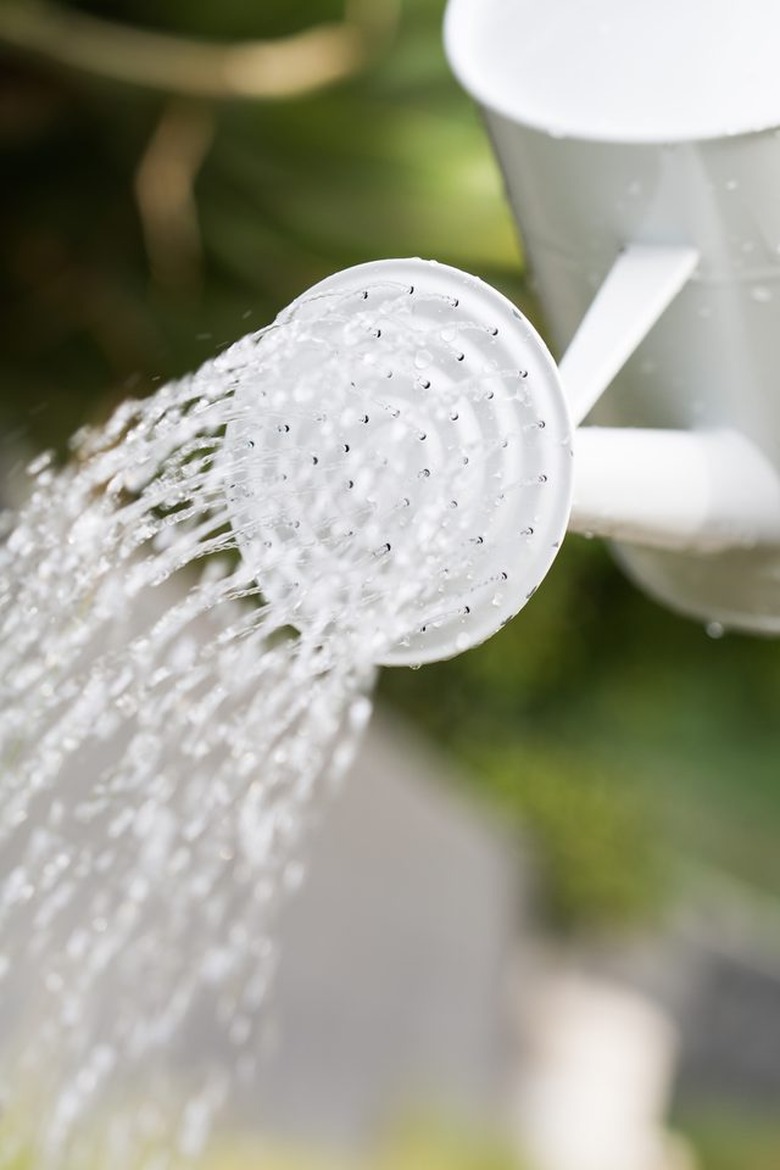How To Grow Lettuce And Other Leafy Greens In Containers
While tomatoes are the most popular crop for home gardeners, leafy lettuce comes in a close second. It's one of the garden crops that seems tailor-made for pots. Up off the ground, away from worms and slugs, the green leaves thrive. Ditto for other leafy greens like spinach, watercress, and mache.
To get started, you need lettuce seeds, potting soil, and some kind of container with drain holes. Once you assemble these elements, you are a month away from homegrown salads and greens. (Your Meatless Monday game is about to be on point!)
How to Choose Your Container
How to Choose Your Container
You can grow lettuce in a plastic or terra cotta planter pot, however with this particular type of veggie, you have other options. Lettuce roots don't require more than four inches of soil for the plant to anchor and thrive, so your choices are many.
You can grow lettuce in plastic gallon bottles if you cut openings in the side. You can use buckets, large coffee cans without their lids, hanging baskets, boxes, or even large plastic cups. Old colanders make excellent homes (not to mention they look super cute) for growing leafy greens too. A four to six inch container can hold up to three plants.
How to Start From Scratch: Seeds
How to Start From Scratch: Seeds
Lettuce loves relatively rich soil, although the plants will grow in ordinary soil as well. If you can, start with a premium potting mix for veggies like Miracle-Gro® Potting Mix that feeds your plants for their entire growing life. Fill up the container almost to the top, leaving a space of at least an inch for watering. Leave a little more space at the top if you plan to mulch.
Moisten the soil through and through. Open the seed packet and press the seeds tightly between your index finger and thumb. After this, scatter the lettuce seeds on top of the soil. Don't worry too much about spacing at this point, since you will thin out the plants later. Cover the seeds with 1/4 inch of soil.
From that time through germination, water the seeds with a spray bottle, enough to keep them moist but not water-logged. Place the container in a sunny location and look for seedlings to sprout in a week or so. After the seedlings appear, water the container whenever the top inch of soil is dry, usually about every other day. After a week, thin the seedlings to at least a couple of inches apart.
How to Put in Transplants
How to Put in Transplants
If you gotta have that lettuce, like, yesterday, you can short-circuit the seeding process by buying young plants called starts or transplants at the garden store. You'll pay more for less lettuce than with seeds, but you can cut off a couple weeks of waiting. As long as the purchased seedlings are over a couple of inches tall, you don't have to wait to move them into the container of your choice.
To accomplish this, dig a hole for the lettuce transplant about the size of the root ball (a clump of soil containing the roots). Carefully remove the transplant's roots and surrounding soil in one piece, then slip it into the prepared hole. Ideally you'll space the plants so that each one has the elbow room to grow to mature size, but you can wedge them closer if you intend to harvest outer leaves as the plant matures. Water the transplants well once they are settled and place the pot in a sunny location.
How to Pick the Perfect Spot for Your Planter
How to Pick the Perfect Spot for Your Planter
Keep in mind that lettuce is a cool season annual, meaning that it grows best in spring and fall and tends to bolt — that is, develop a tall seed stalk and start tasting bitter — in the heat of the summer. To keep harvesting sweet leaves as long as you can, select a site for your container that gets plenty of sun during mornings and evenings, but shade in the heat of the afternoon.
How to Care for Lettuce Through Harvest
How to Care for Lettuce Through Harvest
Your container lettuce plants require regular water, so don't let that soil go dry. Check it every day. The water requirements depend on the size of the container, the weather and the plant's exposure.
How about fertilizer? Some experts recommend regular weekly applications of liquid kelp or other mild fertilizers and others don't. If you start with a good potting soil, fertilizer is probably an extra rather than a must-do.
Harvest your lettuce or other leafy greens as soon as the outer leaves are big enough for salads. Harvest regularly to make the most of your crop, cutting off the larger outer leaves day by day. If you require more lettuce, you can harvest baby leaves too. They will be sweet and delicious.
